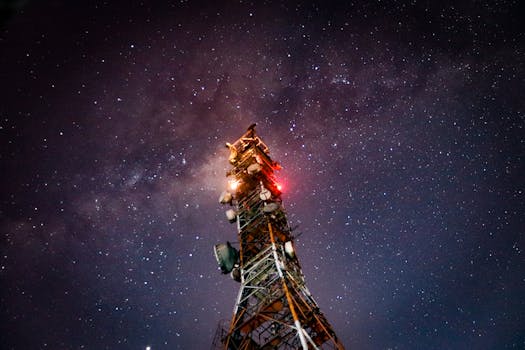
Starlink: Revolutionizing Global Internet Connectivity with Satellite Technology
Starlink is a satellite constellation developed by SpaceX to provide high-speed, low-latency internet connectivity across the globe. The project aims to bridge the digital divide and transform the way we communicate, making it possible for people in remote and underserved areas to access the internet. With its cutting-edge technology and innovative approach, Starlink is poised to revolutionize the global internet landscape.
The brainchild of Elon Musk, Starlink was first announced in 2015, and since then, SpaceX has been working tirelessly to develop and launch the satellite constellation. The project involves launching thousands of small satellites into low Earth orbit, which will work together to provide a network of broadband internet connectivity. Each satellite is equipped with advanced technology, including Hall effect thrusters, Starlink-specific antennas, and a sophisticated software system that enables them to communicate with each other and with ground stations.
How Starlink Works
Starlink uses a combination of satellite technology and advanced networking protocols to provide high-speed internet connectivity. The system consists of three main components: the satellites, the ground stations, and the user terminals. The satellites are launched into low Earth orbit, where they communicate with each other and with the ground stations to provide a network of internet connectivity. The ground stations, also known as gateways, are responsible for connecting the satellite network to the global internet. The user terminals, which are small, compact devices, are used to connect to the satellite network and access the internet.
Benefits of Starlink
Starlink offers several benefits, including global coverage, high-speed connectivity, low latency, and mobility. With its satellite constellation, Starlink can provide internet connectivity to remote and underserved areas, where traditional fiber-optic and cellular networks are not available. The system is also designed to provide high-speed connectivity, with speeds of up to 1 Gbps, making it possible to stream high-definition video, play online games, and access cloud services. Additionally, Starlink’s low latency ensures that data is transmitted quickly and efficiently, making it ideal for real-time applications such as video conferencing and online gaming.
Challenges and Controversies
Despite its potential, Starlink has faced several challenges and controversies, including concerns about space debris, radio frequency interference, and the impact on astronomy. The launch of thousands of satellites has raised concerns about the potential for space debris, which can pose a risk to other satellites and spacecraft. Additionally, the use of radio frequencies by Starlink has raised concerns about interference with other satellite systems and radio astronomy observations. Furthermore, the brightness of the satellites has raised concerns about their impact on astronomical observations, particularly for telescopes that are sensitive to light pollution.
Conclusion
In conclusion, Starlink is a revolutionary satellite constellation that has the potential to transform the global internet landscape. With its cutting-edge technology and innovative approach, Starlink can provide high-speed, low-latency internet connectivity to remote and underserved areas, bridging the digital divide and transforming the way we communicate. While there are challenges and controversies surrounding the project, SpaceX is working to address these concerns and ensure that Starlink is a safe and responsible addition to the global satellite ecosystem.




